
MENUMENU
TALK TO AN EXPERT
Special Hours: 7AM – 6PM PST
TALK TO AN EXPERT
Special Hours: 7AM – 6PM PST
Dinghy boats are extremely important. They bring boaters to shore to stock up on essential provisions, allow exploring hidden areas that otherwise cannot be accessed, and get around the harbor to see neighbors. Thus, boat owners must find a dinghy that meets all their needs. For a long time, small gas engines were the primary means of power, but today an easier, cleaner, more reliable option exists. Let’s explore how you can add electric power to your boat, different electric motors, and the batteries you’ll need to power your new motor.
A dinghy boat is a small vessel used for a variety of reasons. Usually around 10 to 15 feet in length, dinghies are either towed, carried by a larger vessel, or used separately. When used aboard a larger boat (such as a yacht or ship), dinghies typically transport passengers to shore, bring gear and supplies to a harbored boat, and go on recreational excursions.
There are also several different kinds of dinghies, including rigid boats, inflatable boats, and rigid inflatable boats (RIBs). Depending on their usages, a dinghy may be a rowboat, have an outboard motor, or even have a portable mast and sail. Every boat owner will be a little different, depending on their specific needs.
Yes! Most commonly, however, you’ll find companies that produce electric motors for a variety of small vessels. Thus, many boat owners opt to add an electric motor to their own dinghy boat. It’s much more convenient and it can be a lot cheaper than buying an expensive electric boat. Companies that make electric motors for small boats include Torqeedo, EP Carry, Pure Watercraft, and Elco.

There are a couple of ways to make your dingy boat electric. The first way is to purchase an electric outboard motor kit and install it onto the back of your boat. Many electric outboard motors are capable of replacing a traditional gas engine but will require a larger battery bank to power it.
The other option is to purchase an electric trolling motor. These are typically low-powered motors used for quietly maneuvering around a good fishing spot, staying in one place against a current, and putting around a harbor.
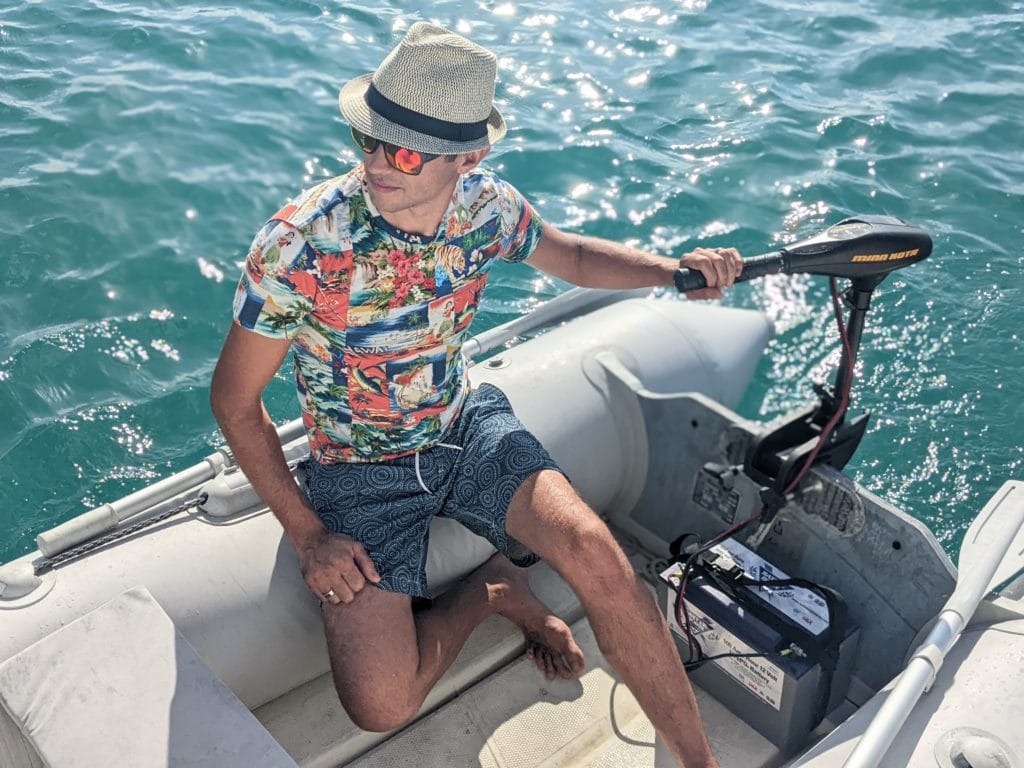
There are pros and cons to both motor types. Gas engines have been around a long time and come in very high power options. For their power, they are lightweight and can be refueled quickly. Messing with gasoline and oils, however, is not fun, and the engines tend not to be reliable when used intermittently. Carburetor problems are very common in small engines and can cause lots of headaches.
Many of these problems can be resolved with an electric motor. Very few moving parts and no fuels or oil to mess with makes them more reliable and pleasant to use. They are also very quiet and emit no fumes. Electric motors, however, need to carry a large battery and recharging can take time. If charging on the go, a generator, solar, and inverter may be required, and it might take a full day to recharge.
Charging is the main reason a lot of people choose not to get an electric motor, however, most people who have them state that charging is the best reason to get one. This is because all you need to do is plug it in instead of messing with fuel. When your electric motor is powered by lithium batteries, it is even easier.
Most electric outboard motors look very similar to gas-powered outboard motors. They sit at the back of the dinghy boat. You can control them with a tiller steer or even a foot pedal. Electric outboard motors have many advantages: they’re lightweight, virtually maintenance-free, and produce zero emissions. Many of these motors will have the power to even get the dingy up on a plane and move it quickly.
On the other hand, electric trolling motors are typically smaller and produce less power than electric outboard motors. There are also two main types of trolling motors: Bow-mounted and transom-mounted.
Transom-mounted trolling motors are typically used for actually trolling. They’re great for covering a large range while searching for fish. However, keep in mind that this doesn’t mean they’re fast. Bow-mounted motors are popular for avid fishers because they make it easier to steer your boat while fishing off the bow.

If you’re looking for an electric motor that can cover long distances quickly, we recommend an electric outboard motor. However, if you’re an angler and will mostly use your dinghy for fishing and quietly putting around hot spots, we recommend an electric trolling motor.
This depends on your specific needs. Below we cover horsepower, runtime, range, and motor speed to help you determine which motor is right for you.
Electric dinghy boat motors are typically measured in watts, but let’s talk about horsepower for the sake of comparison. Electric outboard motors can vary in horsepower. Many motors range between 3-10 horsepower for smaller dinghies. Boaters with larger dinghies may opt for an outboard motor with 20 horsepower or more. As for trolling motors, they typically max out at 1.5-2 horsepower.
Be sure to consider that higher power units will need more batteries and higher voltages to handle the power. Most motors over 20HP will require a voltage higher than 48 and can get complex.
The runtime and range of your electric motor will vary based on the type of motor you have, the weight of that motor, the weight of your boat, and the watt-hours of your batteries. For example, the Torqeedo Travel 1103 CS electric outboard motor covers around 40 miles at about 2 knots and will run for about 20 hours at this speed. This is with a 915 Wh lithium battery and a maximum recommended boat weight of 1.5 tons.

Most electric outboard motors will range between 5 and 15 knots. The speed will vary depending on the horsepower of the motor and the weight of the boat. However, if you’re looking to go as fast as 15 knots, you’ll need to invest in an outboard motor with around 20 horsepower. These can get expensive and aren’t used much for dinghies. You’re more likely to find something between 5-10 knots. Trolling motors, on the other hand, typically max out at 2-3 knots.
Many times dinghies don’t need to be super fast but will need the power to fight winds and currents in some situations.
Which battery will help make the most out of your dinghy boat’s electric outboard motor? Let’s compare lithium and lead-acid when it comes to weight, performance, and maintenance.
Lithium is a clear winner when it comes to weight. In a boat, the more weight in batteries you carry the less range and more power will be required. This combination makes lead-acid options much less appealing for electric boats. It also makes moving the battery to and from the dinghy much more difficult.
Our Battle Born Batteries are 1/5th the weight and 2-3 times more powerful than comparable lead-acid batteries. That’s a Win-Win for electric boats! This means less weight and fewer batteries (or WAY more energy!)
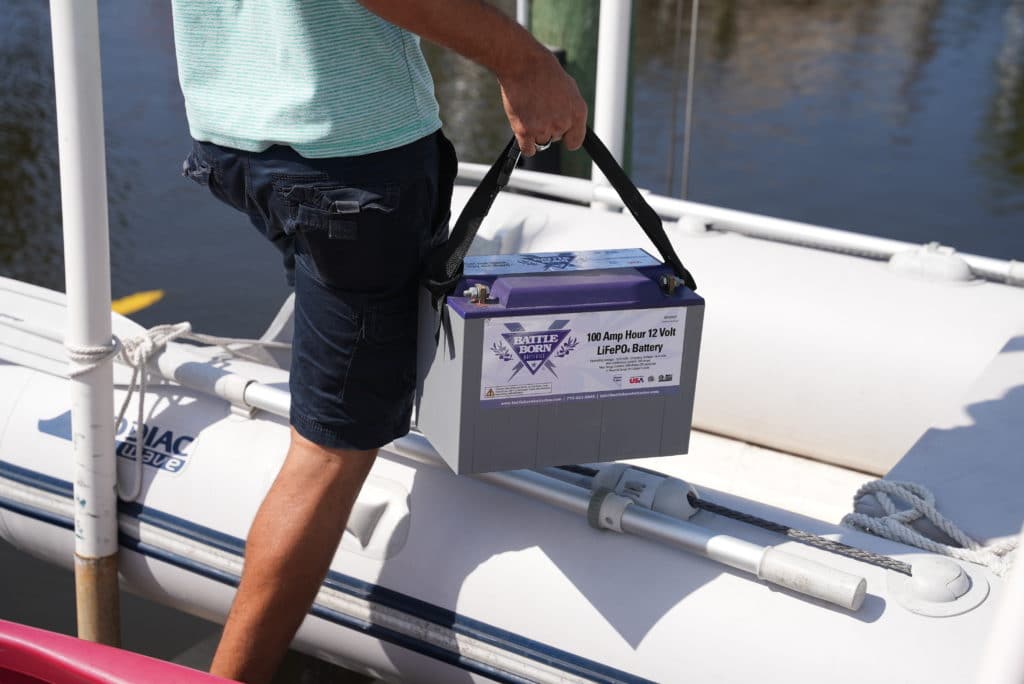
Lithium batteries also take the cake when it comes to longevity. They handle a deeper discharge (up to 100%, while lead-acid batteries can only handle a 50% discharge). You can also discharge and recharge lithium batteries 3,000-5,000 times. Lead-acid batteries will typically last between 500-1,200 cycles.
Looking for batteries you won’t have to maintain on your dinghy boat? The clear choice for this is also lithium. Lithium batteries are sealed and require no maintenance, while lead-acid batteries typically need to be watered, cleaned, and kept at optimal temperatures.
In a nutshell, the Peukert Effect influences how the discharge rate influences the battery’s capacity. The higher the rate of discharge, the greater the internal resistance. This can dramatically shorten how long a battery will last.
Because of the Peukert Effect, lead-acid batteries only have about 50-65 percent usable energy when run at higher power. Meanwhile, lithium batteries are 95-98 percent efficient. This is very important to consider when operating a higher-power electric motor.
Simply switching from lead-acid to lithium batteries will provide much more power due to less voltage drop and no Peukert losses.
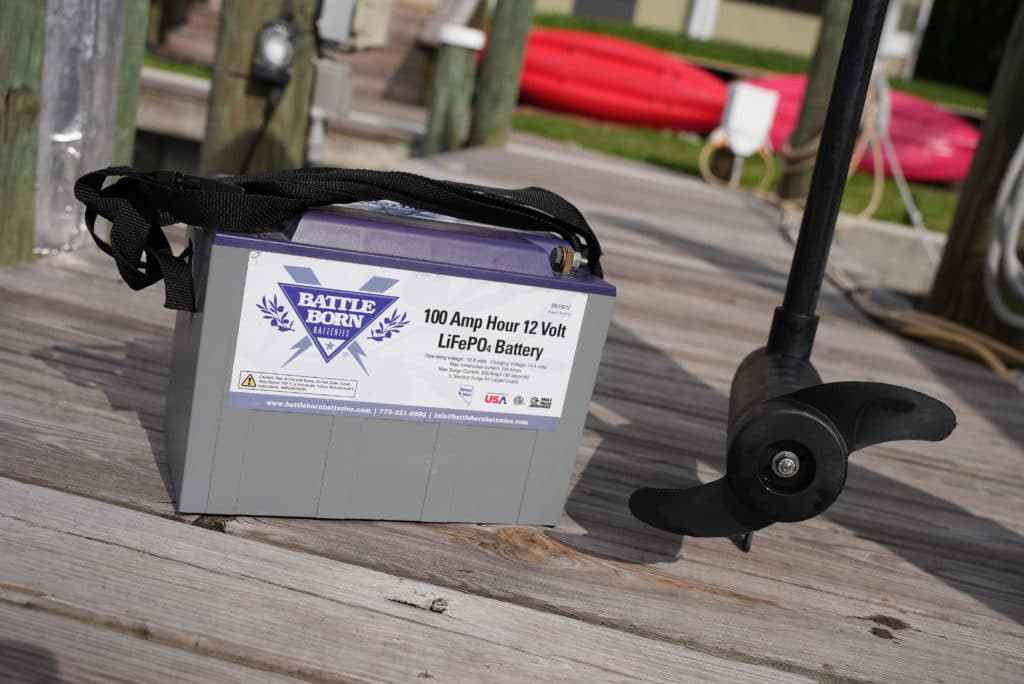
The prices of electric outboard motors for dinghies vary greatly depending on their horsepower and performance. However, in general, you’ll probably pay anywhere between $1,600 – $5,000, depending on your motor needs and the size of your boat.
In addition, you will need to think about the size of your battery bank and make an investment choice. Over time, lithium is the economical and quality-of-life choice for electric motor batteries.
Having an electric dinghy boat comes with many advantages. They’re quiet, emission-free, low-vibration, and require virtually no maintenance. Moreover, there isn’t a huge price difference between electric and gas outboard motors for small boats like dinghies. One of the biggest benefits is just not having to mess with a small engine. Many small outboard motors do not have the reliability most want.
Therefore, we think having an electric dinghy boat is totally worth it! Just make sure to get the right power system for your motor, and you’ll be able to spend countless days on the water.

We know that building or upgrading an electrical system can be overwhelming, so we’re here to help. Our Reno, Nevada-based sales and customer service team is standing by at (855) 292-2831 to take your questions!
Also, join us on Facebook, Instagram, and YouTube to learn more about how lithium battery systems can power your lifestyle, see how others have built their systems, and gain the confidence to get out there and stay out there.
Shop Best Sellers

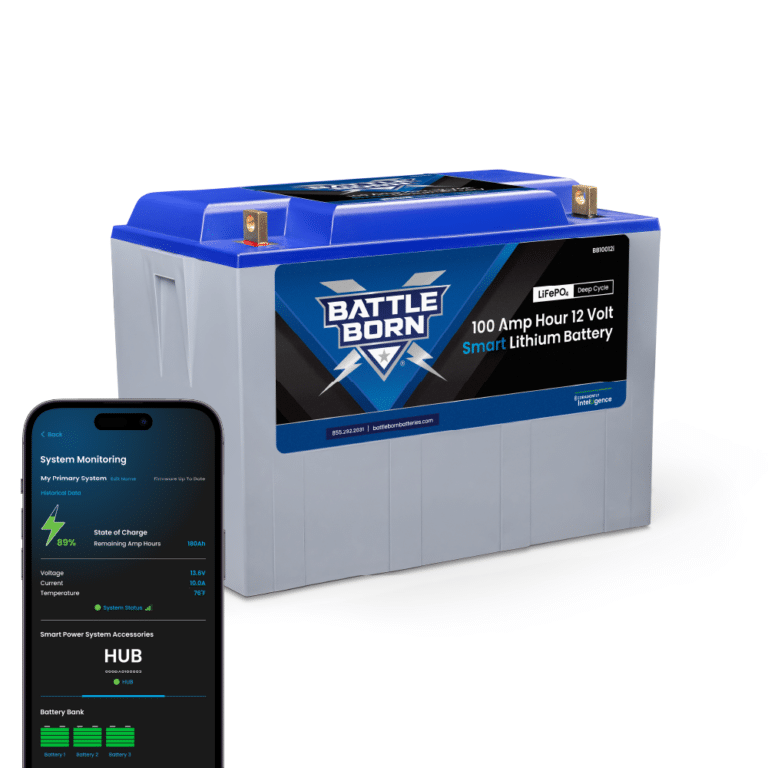

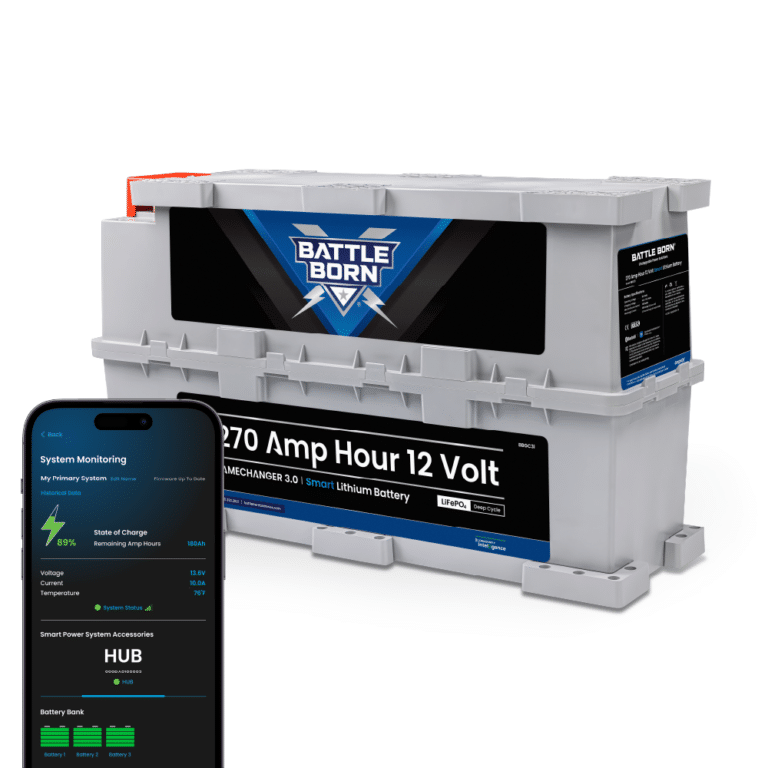




Ask a technical specialist now at 855.292.2831
Stay in the Know